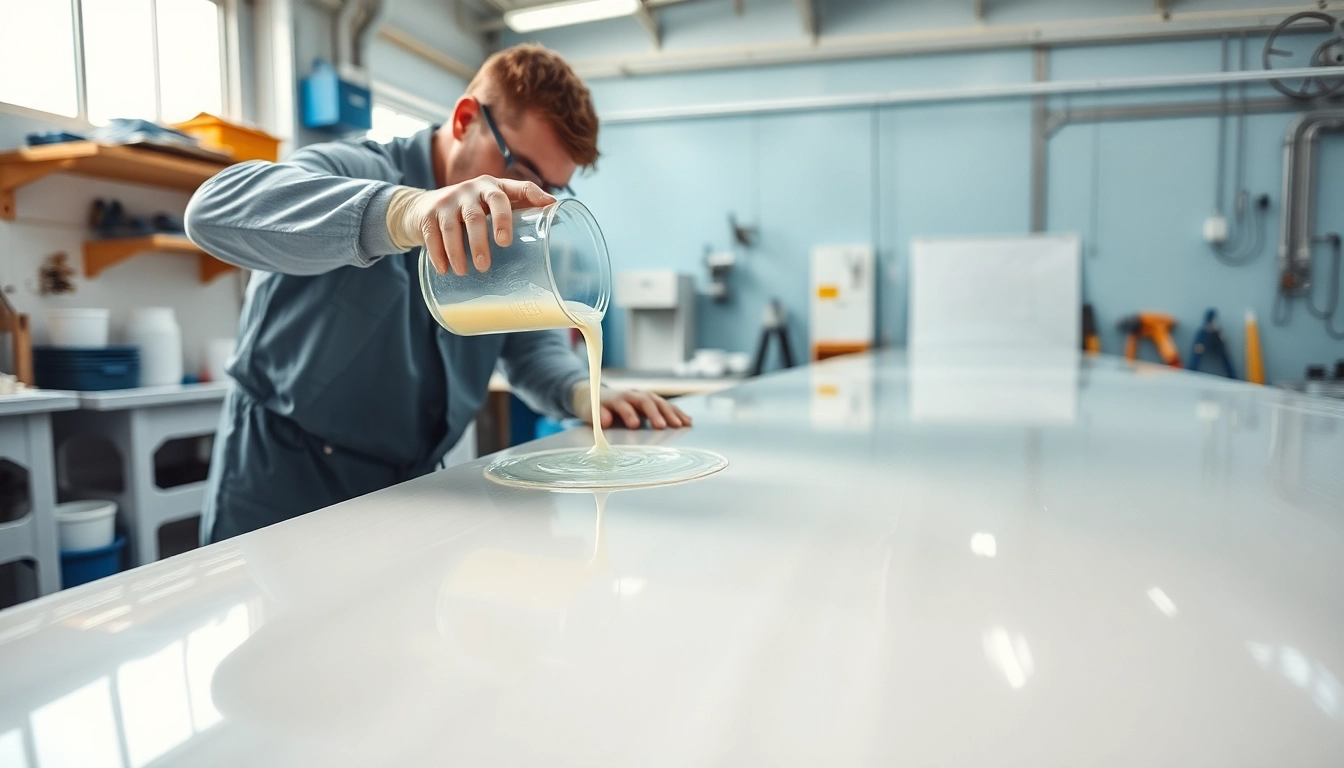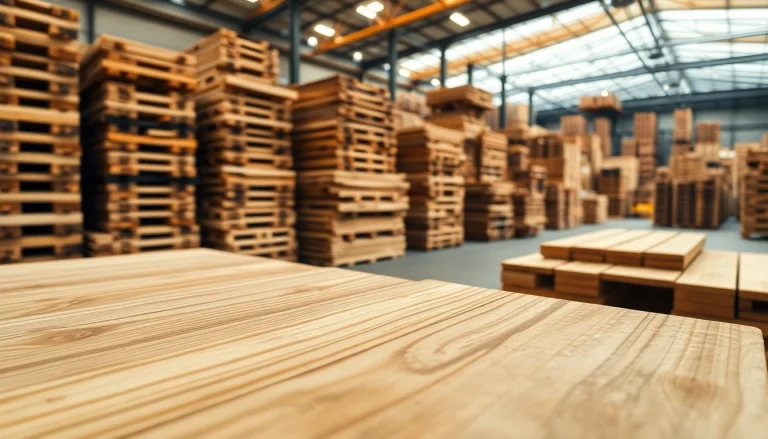Understanding Laminating Resin
What is Laminating Resin?
Laminating resin is a type of thermosetting polymer that is primarily used in the fabrication of composite materials. It serves as a binding agent, allowing layers of various materials—most notably fiberglass—to bond together into a strong, durable composite structure. Typically, laminating resins are categorized into two main types: polyester and epoxy. Each type has its own unique properties that suit different applications, but both are designed to cure into a rigid form, providing the strength and rigidity needed for challenging environments.
The lamination process involves applying the resin onto a substrate or mold and then layering materials such as fiberglass over it. The resin not only adheres these layers together but also encapsulates them, enhancing their structural integrity. As a result, laminating resin is often found in boat building, automotive applications, and various other industrial uses where high strength and durability are required. For more insights on using this material, check out this laminating resin guide.
Key Properties and Benefits of Laminating Resin
- High Strength: Laminating resins, particularly epoxy, provide superior tensile strength and resistance to impact. This allows for the creation of rigid structures that can withstand significant force.
- Chemical Resistance: Many laminating resins are designed to resist degradation from chemicals, which makes them suitable for environments where exposure to corrosive substances is common.
- Thermal Stability: These resins can maintain their integrity under varying temperature conditions, making them useful in both high-heat and low-temperature applications.
- Low Shrinkage: Laminating resins typically exhibit minimal shrinkage during curing, which is crucial for maintaining the dimensional accuracy of the finished product.
- Versatility: Laminating resins can be used in a wide variety of applications, including marine, automotive, construction, and composite aerospace components.
Common Applications for Laminating Resin
Laminating resin finds application across various industries due to its beneficial properties. Here are some common uses:
- Marine Industry: Often used to construct hulls, decks, and other components of boats, as it provides waterproofing and strength.
- Automotive: In automotive manufacturing, laminating resin is utilized for creating lightweight components that improve fuel efficiency without sacrificing safety.
- Aerospace: The aerospace sector employs laminating resins in composite materials that are integral to aircraft structures, maximizing strength while minimizing weight.
- Construction: Used in the creation of composite beams and columns, laminating resin enhances structural elements to withstand heavy loads.
- Consumer Goods: Many everyday durable goods are composed of laminated materials, including sports equipment and furniture.
Choosing the Right Laminating Resin
Types of Laminating Resin Available
When selecting a laminating resin, it is essential to consider the variety of options available, especially the two most commonly used types—polyester and epoxy.
- Polyester Resins: Generally more affordable and easy to work with, polyester laminating resins cure quickly and are ideal for projects requiring a fast turnaround. However, they can be less durable than epoxy and may offer lower resistance to chemicals and environmental factors.
- Epoxy Resins: Known for their superior bonding capabilities and overall strength, epoxy resins are preferred for applications demanding high performance. While they take longer to cure compared to polyester, they provide a stronger final product and greater adhesion to substrates.
Factors to Consider When Selecting Laminating Resin
Several factors can influence the choice of laminating resin:
- Application Requirements: Consider the specific conditions under which the final product will be used, such as exposure to moisture, heat, and chemicals.
- Curing Time: Determine how quickly you need the resin to set and how that aligns with your project timeline.
- Workability: Some resins are easier to mix and apply than others; choose one that matches your skill level and desired finish.
- Cost: Factor in your budget as the cost of resin can vary significantly between types and brands.
Comparing Laminating Resin to Other Resin Types
In addition to laminating resin, there are other types of resins available, such as gel coats, casting resins, and adhesive resins. Understanding the differences can help you make an informed choice:
- Gel Coats: Typically used as a protective layer over laminating resins, gel coats provide a finish that is smooth and glossy.
- Casting Resins: Used for filling molds and creating solid objects, casting resins generally have different viscosity and curing properties compared to laminating resins, which are more suited for layering.
- Adhesive Resins: These resins serve the primary function of bonding different materials rather than providing structural reinforcement.
Proper Techniques for Using Laminating Resin
Preparation Steps Before Application
Successful application of laminating resin depends on proper preparation. Follow these steps to ensure the best results:
- Select Your Workspace: Ensure you are in a well-ventilated area free from dust and debris, as these can impact the application process.
- Gather Materials: Have all necessary materials on hand, including the resin, hardener, mixing containers, brushes or rollers, and safety gear.
- Prepare the Surface: Clean the surfaces that will be bonded thoroughly. Remove any grease, dust, or contaminants that could affect adhesion.
- Measure Accurately: Follow the manufacturer’s recommendations for measuring resin and hardener, typically based on a specific ratio for optimal performance.
Mixing and Applying Laminating Resin Effectively
Mixing and applying laminating resin are critical steps that require precision:
- Mix Thoroughly: Combine the resin and hardener in a clean container, stirring consistently to ensure a uniform mixture. Avoid over mixing, which can introduce air bubbles.
- Apply Evenly: Use a brush or roller to apply the resin evenly over the surface, ensuring complete coverage. Work in small sections to prevent the resin from curing before you lay the fiberglass mat.
- Layering: When adding multiple layers of fiberglass, apply the resin to each layer while the previous one is still tacky to promote good adhesion.
- Control the Environment: Maintain stable temperature and humidity levels, as extremes can affect the curing process.
Post-Application Best Practices
After applying laminating resin, follow these best practices to ensure a successful cure:
- Allow Adequate Curing Time: Depending on the resin type and environmental conditions, allow the resin to cure for the recommended time before handling the project.
- Inspect for Imperfections: Once cured, inspect the surface for any imperfections or areas that require sanding or additional resin.
- Safety First: Dispose of any waste materials properly and clean your tools immediately for longer use.
Common Issues with Laminating Resin and Solutions
Handling Inadequate Curing
One of the most frequent issues encountered with laminating resin is inadequate curing. This can occur due to several factors, including incorrect mixing ratios, low ambient temperatures, or insufficient ventilation. To address this:
- Check Ratios: Always ensure that you are mixing the correct ratio of resin to hardener as specified by the manufacturer.
- Maintain Temperature: Ensure curing takes place in a conducive temperature range as recommended. If necessary, use heating lamps to raise the temperature.
- Patience: Sometimes, simply allowing more time for the resin to cure can solve the issue, especially in cooler temperatures.
Dealing with Air Bubbles and Imperfections
Air bubbles can be an annoying but common problem with laminating resin. Here are ways to minimize and deal with them:
- Mix Slowly: Stir the resin slowly to minimize the incorporation of air.
- Use Vacuum Techniques: Employ a vacuum chamber during mixing to extract air bubbles before application.
- Sanding and Filling: If bubbles do appear, sand down the surface once cured and fill in the imperfections with additional resin.
Tips for Repairing Laminating Resin Mistakes
Even experienced users can encounter mishaps. Here are some tips for rectifying mistakes with laminating resin:
- Assess the Damage: Determine the severity of the error. Minor drips and sags can often be fixed with sanding, while major issues may require removing and replacing the affected area.
- Use Compatible Resins: Ensure any repairs are done with the same type of resin for consistency and optimal adhesion.
- Resand and Prepare: Before applying new resin, sand the area to create a rough surface. Clean thoroughly to prevent bonding issues.
Future Trends in Laminating Resin Technologies
Innovations in Laminating Resin Formulations
The laminating resin industry is continuously evolving, with new formulations emerging to enhance performance characteristics. Key innovations include:
- Bio-Based Resins: Formulations that incorporate renewable materials are gaining traction, promoting sustainability without sacrificing performance.
- Advanced Cure Mechanisms: New curing technologies, such as UV curing resins, are allowing for faster production cycles and enhanced energy efficiency.
- Improved Mechanical Properties: Ongoing research and development aim to enhance the mechanical strength and elongation properties of laminating resins, ensuring they meet ever-demanding industrial standards.
Environmental Considerations and Sustainable Resins
In an effort to reduce the environmental impact of resin production and usage, manufacturers are focusing on sustainable practices:
- Recyclable Materials: The shift towards creating resins and composites that can be recycled at the end of their lifecycle is growing.
- Low VOC Options: Development of laminating resins with low or zero volatile organic compounds (VOCs) are becoming a standard to reduce emissions and improve indoor air quality.
Industry Insights on Laminating Resin Developments
As industries evolve, the demand for new laminating resin solutions is spurred by trends in manufacturing and technology adoption. Key insights include:
- Customization: There’s an increasing demand for customizable resin solutions that cater to specific application needs, leading to specialized products.
- Collaboration: Partnerships between material scientists and end-users are becoming more common to ensure product developments align with practical applications.
- Smart Materials: Research into smart lamination technologies is underway, featuring sensors embedded into laminating layers to provide real-time data on structural health.








